Last updated on September 15th, 2023
Archimedes of Syracuse was a famous scientist and mathematician in Ancient Greek. Born in 287 BC in Syracuse, Greece then, but now in Italy, he was also an astronomer, engineer, physicist, and inventor. He is remembered for numerous innovations that still work today, including the Archimedes screw and lever system. While experimenting with hydrostatics and statics, he joined the list of the first scientists of classical antiquity to apply maths to physical situations. His contributions to calculus, geometry, and pulleys earned him the title ‘The Father of Maths and Mathematical Physics.’ This article highlights 58 interesting facts about Archimedes.
1. Archimedes’ Family Background is Almost Unknown
The only relative of Archimedes documented in his work (The Sandreckoner) is his father, Phidias, who was an astronomer. Archimedes is believed to have hailed from a noble family.
2. Archimedes Was a Relative of the Greek Tyrant of Syracuse
According to Plutarch, a Greek historian, Archimedes was related to King Hiero II of Syracuse, who ruled between 275 and 215 BC. Connections with the royal family enabled Archimedes to pay for his education.
3. Archimedes Went to Egypt for Formal Education
Archimedes went to a school founded by a Greek Mathematician (Euclid) in Alexandria, Egypt, where he majored in maths and physics. While studying, he became friends with renowned intellectuals: Eratosthenes of Cyrene, the Greek polymath and chief librarian at the Library of Alexandria, and Conon of Samos, the astronomer who named the constellation ‘Coma Berenices.’
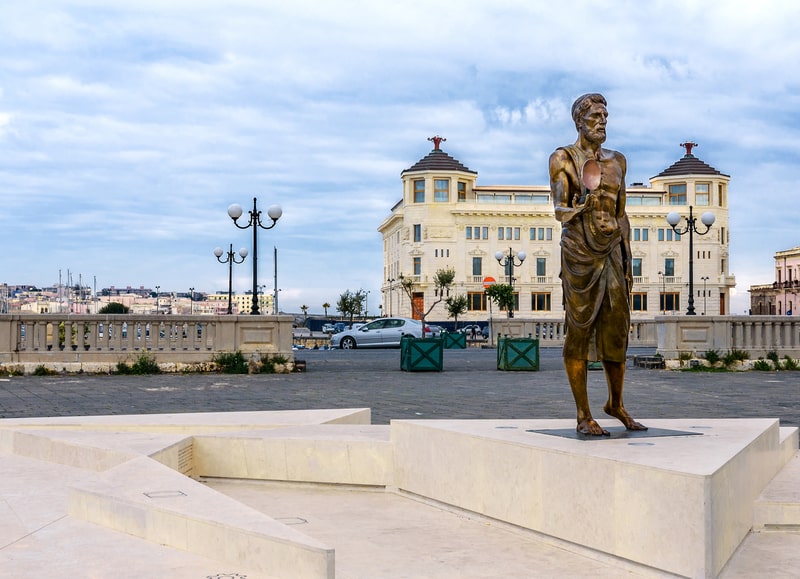
4. Most of the Works of Archimedes are Found in Other Authors
His original work, which was in Doric Greek, did not survive. The world got to know Archimedes through the writings of famous authors. Seven treatises by Archimedes only existed through reference by such writers as Pappus of Alexandria and Johann Herwagen.
5. His Autobiography May Have Been Lost
Polybius was the first author to document Archimedes’ work, but he focused on the war machines that Archimedes invented. Polybius omitted the personal life story of the father of mathematics because it was published elsewhere and could not be traced. Heracleides, a friend of Archimedes, wrote his biography, but the records got lost.
6. His Work Focused on Explaining Why and How Things Work
Finding solutions was one of Archimedes’ favorite tasks. Voltaire acknowledged in his writing that Archimedes had a more imaginative mind than Homer, the poet.
7. Archimedes’ First Work Was on Geometry
He discovered a method of calculating the area within a circle and named it the principle of exhaustion. He is the wizard behind the theorem on spirals and formulas for determining volumes.
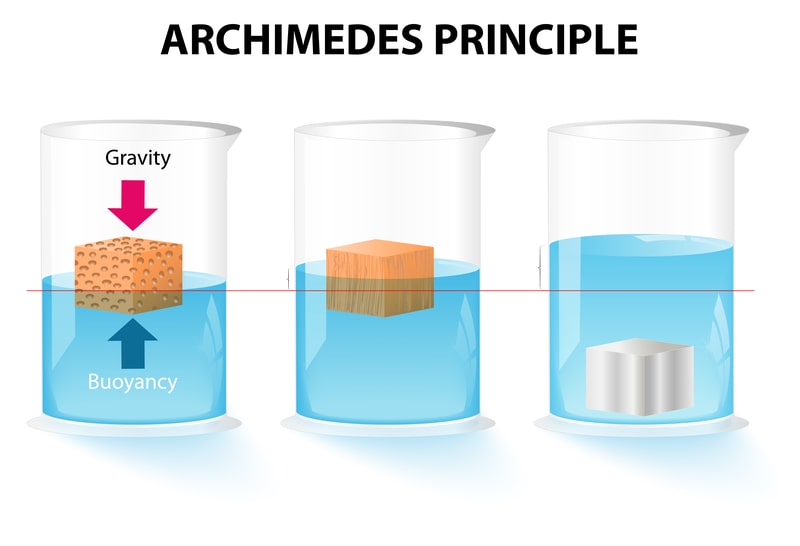
8. His Greatest Discovery Was the Archimedes’ Principle
The principle demonstrates how a ship floats on water instead of sinking, despite its heavy mass. This is also the law of floatation which accorded Archimedes another title – the father of hydrostatics.
9. The Pursuit of His Goals Took all His Attention and Energy
His undertakings completely consumed him to the extent that he forgot crucial chores like meal preparation, eating, and bathing. His quest for scientific knowledge is believed to have contributed to his death.
10. He Perfected Integration in Maths
Through the integration method, Archimedes could find areas, surface areas, and volumes of different shapes. He also conceived the topic of calculus, which was later perfected by Newton, Kepler, Fermat, and Cavalieri.
11. Archimedes Used to Tease Fellow Mathematicians
He knew that his prowess in maths was unmatched. So, he would give other mathematicians solutions to complex quizzes, but he wouldn’t show them how he arrived at the answers.
12. Archimedes Wrote More Than 20 Books
The works of Archimedes were primarily based on physics and mathematics. These include Archimedes’ Opera Omnia, The Method of Mechanical Theorems, On Spirals, Measurement of a Circle, The Life of Pi, S.Net, etc.

13. Archimedes May Have Written About Astronomy
Writers who came later suggested that Archimedes may have written manuscripts on astronomy, but none was published except the Sand-Reckoner.
14. Among Archimedes’ Achievements Is the Discovery of the Density Formula
Also called hydrostatic weighing, the density formula is a convenient method of calculating the volume of irregular objects. The approach is used today in construction.
15. He Set Out The Basic Principles of Mechanics
His writing ‘On Plane Equilibriums’ unveils the fundamental theories behind the center of gravity of two-dimensional figures. He dedicated this treatise to finding the center of gravity of trapeziums, triangles, and parallelograms.
16. He Attempted to Calculate the Number of Sand Grains in the Universe
In his Sand-Reckoner, Archimedes determined the size of the universe and tried to see how many grains of sand could fill the world. His idea was based on the heliocentric model that Aristarchus (an ancient astronomer of Samos) proposed.
17. He Inspired the Invention of the Solar Furnace
New evidence shows that Archimedes’ burning mirror (heat ray) functioned as the present-day solar furnace or heliostat. His device converged sun rays into a laser beam that was used to chase away the Roman fleet invading Syracuse in 212 BC. The laser beams were so powerful that they burned the enemy’s ships.

18. He Determined an Accurate Value for Pi
Archimedes examined the perimeter of a polygon inside and outside a circle. He noted that it is almost equal to the circumference of that circle. Through geometric and trigonometric theorems, he found an accurate way of estimating π (3.14), which has been used for centuries.
19. Archimedes’ Principle Compares to the Modern CBCT
CBCT (cone beam computed tomography) calculates the volume of teeth or pulp cavities. A recent study published in a journal of oral surgery, medicine, pathology, and radiology shows that CBCT uses some concepts in Archimedes’ principle.
20. He Was the First Mathematician to Calculate the Volume of a Sphere
The Greek scientist discovered that a sphere’s surface area and volume are two-thirds that of the smallest cylinder surrounding it. This was a significant milestone in the history of math.
21. His Gravestone Has a Sphere and Cylinder
His work meant a lot to him that he requested the mathematical proof engraved on his gravestone. The two shapes were sculpted on his tombstone, plus an inscription showing their relationship.
22. His Creativity Was Triggered by the Problems Presented by King Hiero II of Sicily
Archimedes made most of the discoveries by solving issues that King Hiero II posed. He was passionate, and his mind was constantly buzzing with maths and physics concepts.
23. He Founded the Law of Buoyancy Long Before the Concept of Force
Archimedes’ principle describes the resultant force when an object is submerged in a fluid wholly or partially. This force (displaced fluid) equals the weight of the object.
24. He Determined If the King’s Crown Was Pure Gold Through the Law Of Bouyance
King Hiero the Second summoned Archimedes to inspect whether his crown was genuine gold or mixed with silver. While in a bathtub, Archimedes realized that the overflowing water had a volume equivalent to the size of his body immersed in the bathtub. He applied this principle to determine the purity of the king’s crown.
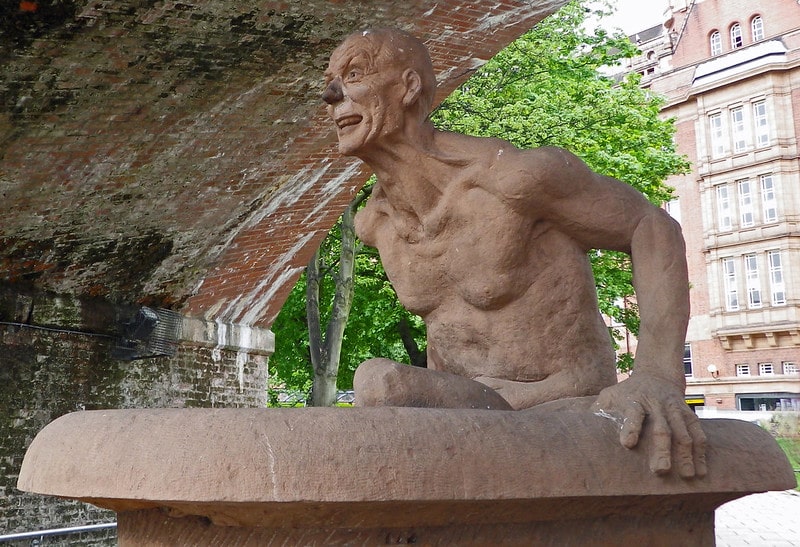
25. He is Responsible for the Expression Eureka!
Eureka is a joyous Greek expression meaning ‘I have found it.’ When he realized the king’s gold had some impurities, Archimedes jumped out of a bath naked and shouted, “Eureka!” down the streets. The king punished the dubious goldsmith since he had used some silver in the design, making it lighter.
26. Some of his Books Are Partly in Greek and Latin (Translation)
Part of his script on On Floating Bodies is written in Greek, while the rest is translated into medieval Latin. The book explores hydrostatics. A few treatises were translated into Arabic around the 8th century.
27. His Final Work Was Hidden Behind a Christian Ritual Book
According to Heath, Archimeds’ Method of Mechanical Theorems was found by Johan Heiberg in 1906 between the pages of a religious script. Older pages of the book had been scraped off and recycled.
28. He Demystified the Mechanism of the Lever
The lever is designed to rotate around the pivot. The farther the point is from the pivot, the faster it moves. Through geometric reasoning, Archimedes concluded that power is the product of speed and force.
29. He Made a Boastful Claim That He Can Overturn the Earth
With a befitting position, the lever can topple the earth, hypothetically speaking. Archimedes alleged in his work ‘On the Equilibrium of Planes’ that he would have to stand at a distance equivalent to 9 million light-years from the planet to overturn the planet.
30. Archimedes is Credited With the Invention of Astronomical Equipment
He is believed to have designed devices that helped identify the positioning and motions of planets, the moon, and the sun. One such apparatus was a bronze sphere that showed the location of other planets besides the earth, which was regarded as the center of the universe.
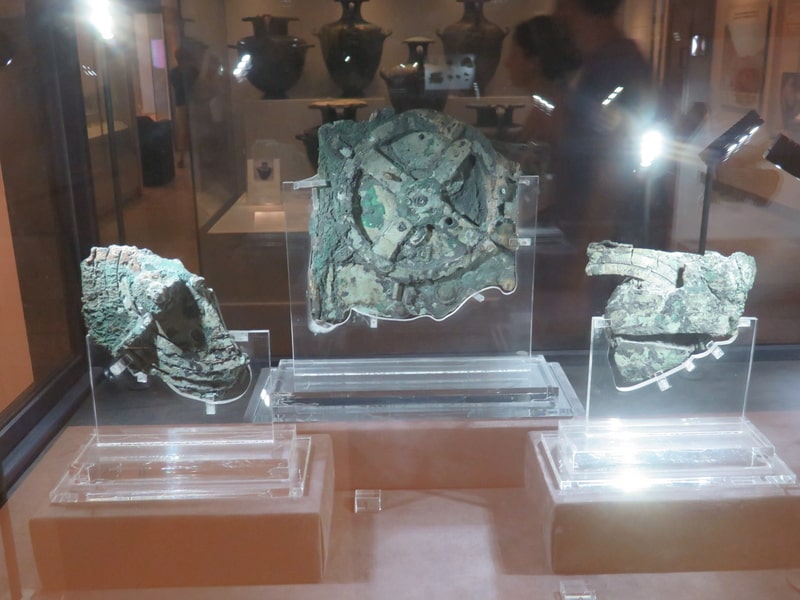
31. Archimedes Was Probably the Inventor of the Antikythera Mechanism
Since he developed many astronomical devices, Cicero claimed that Archimedes might have invented the Antikythera mechanism. This analog computer predicted eclipses and kept track of the revolving planets.
32. Archimedes’ Law of Straight Lines is More Than Just Geometry
The law proves that a straight line between two points is the shortest route between them. The principle also applies to real-life situations: simple and direct routes are the easiest ways to reach goals.
33. Archimedes’ Principle is the Basis of the Third Law of Motion by Sir Newton
It took 18 centuries before Isaac Newton understood Archimedes’ theorem. Newton explained why an object seems lighter when submerged in a fluid. According to Newton’s Law of Motion, every natural force produces an equal and opposite reaction.
34. He Is Thought to Have Invented the Odometer
In 27 — 23 BC, the Roman architect Vitruvius explained how the odometer measures the distance a vehicle has covered. However, Archimedes could have been the genius behind its invention around the First Punic War.
35. He Was the First to Use a Water Screw to Remove Water From a Leaky Ship
After building the king’s warship, it started leaking, and the king turned to him to solve the issue. Archimedes had to develop a new tool (water screw) to scoop water out of the vessel.
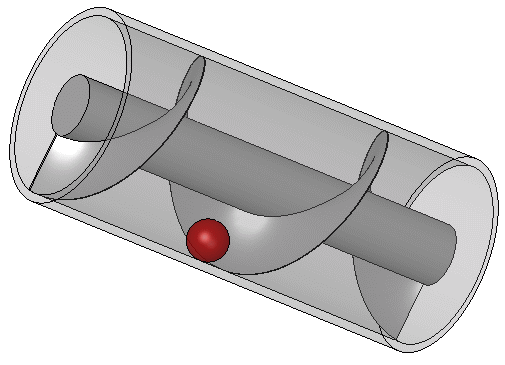
36. The Famous Archimedes Screw Forever Changed the World
It takes one person to transfer low-lying water upward to a canal with the Archimedes screw or the positive-displacement pump. The circular pipe that encloses a helix tilted at 45° raises the water when rotated. The screw pump also lifts heavy loads with minimal effort.
37. Archimedes Designed a Warship for King Hiero II
Upon the king’s request, the talented genius designed a vessel with a capacity of 1000 people and enough space for weapons. The ship could handle any war during the reign of King Hiero II.
38. He Is Responsible for the Compound Pulley That Moved an Entire Warship
A compound pulley comprises fixed and movable pulleys, giving it a mechanical advantage. Before its invention, people used ropes to hoist water. Between 287 and 212 BC, Archimedes created the first compound pulley, moving a warship full of soldiers with his strength.
39. He Invented a Ship Shaker to Defend Syracuse
The ship shaker, also known as Archimedes’ claw, was a superweapon featuring a crane-like arm with a giant metallic hook. When rivals approached, the claw was dropped to lift the ship upwards, release it, and sink it.
40. Worked on Hydraulics
Archimedes was also known for his work on hydraulics and mathematics. He is credited with being one of the first to study and describe how fluids flow through pipes. By doing so, he helped engineers in the hydraulic field.
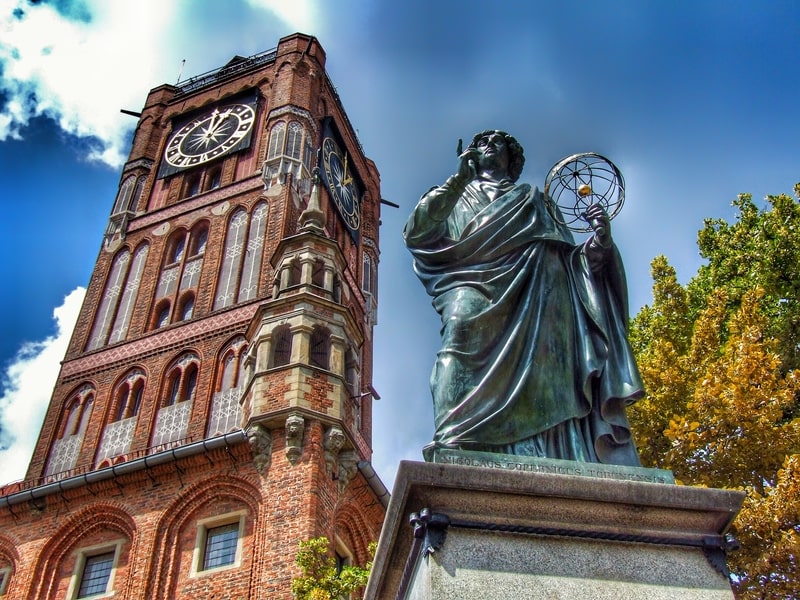
41. The Heliocentric Theory
Archimedes was one of the first to propose a heliocentric theory, suggesting that the sun was the center of the universe rather than the earth. This idea was further developed by Copernicus and is now accepted as fact.
42. The Catapults
The developer invented the first catapult, a military weapon to launch projectiles. He used his knowledge of mathematics and mechanics to design powerful machines, such as the compound pulley and lever, to increase the range of his catapults.
43. Designed Siege Engines
Aside from the Claw of Archimedes, which lifted ships out of the water, Archimedes created a wide array of siege engines to protect Syracuse from Roman invasion. A steam cannon powered by boiling water is credited to him as the first primitive version.

44. A Naked Sculpture of Archimedes Sits in a Village in Hampshire
Statues that honor Archimedes are not only found in Italy. The Greek mathematician is also commemorated with a 9ft naked statue in Ellisfield, Hampshire.
. . . continue reading on the next page
